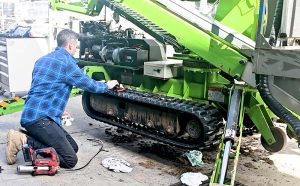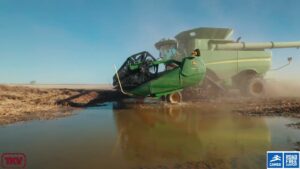Excavators are ubiquitous in the construction and agricultural industry and so ensuring the longevity of these machines is a top priority for many. One key area to consider when thinking about purchasing or renting an excavator is the durability of their tracks.
The lifespan of steel excavator tracks is influenced by several factors, including the type of work they are used for, the operating environment, and maintenance practices. In this article, we will delve into these factors to give you a better understanding of how long steel excavator tracks can last.
Why are steel tracks used?
While a lot of people weigh up the benefits of rubber Vs steel tracks (that’s for another blog to unpack) we’ve listed some of the reason why you might opt steel tracks on your excavator;
● They provide great traction on uneven terrain which is essential for excavators to perform tasks such as digging and moving earth.
● They can be easily repaired by removing and replacing damaged links.
● They are highly durable and less subject to damage making them a cost-effective option in the long run.
How long do steel tracks last?
As we’ve already mentioned above, the longevity of steel excavator tracks can vary depending on various factors such as the operating conditions, maintenance practices, and the quality of the tracks themselves.
On average, well-maintained steel excavator tracks can last anywhere from 1,500 to 7,000 hours of operation. However, in some cases, with proper care and regular inspections, tracks can even exceed this range. Regularly checking for wear, maintaining appropriate tension, and promptly addressing any damage or signs of wear can significantly extend the lifespan of steel excavator tracks, ensuring optimal performance and reducing overall operating costs.
Factors that affect steel track wearlife
There are a number of factors that can substantially reduce wearlife of your steel tracks. These are as follows:
· Amount of walking or tracking – for high mileage applications, rubber tracks are often the better option as excessive walking rapidly increases internal track wear
· Over tensioning – running your tracks too tight substantially increases the forces on the track and thus the wear rate
· Geology – sandy, wet, muddy and or salty environments will all increase wear, either by abrasion, over tensioning or rust
· Quality – lower grade after-market tracks do not have the depth of hardening or the correct alloy metals. This lower grade material inevitably wears faster
· Operation – a good operator will remove debris and rocks from the path of the excavator before moving. Doing track turns with both tracks moving rather than skid turns with a single track moving also reduces the stress on the track.
Get long-lasting, premium steel tracks from TKV
If you are looking to purchase steel tracks for your excavator, look no further than TKV. Our team of experts can help you find the perfect steel tracks to meet your requirements. We offer a wide selection of high-quality steel tracks, chains and links at competitive prices. With our extensive knowledge and experience in the industry, we can assist you with all your needs, from selecting the right tracks to installation and maintenance. Don’t hesitate to contact us today to get started on your purchase and ensure your excavator is equipped with the best tracks for optimal performance.


